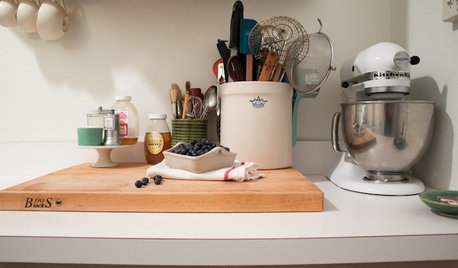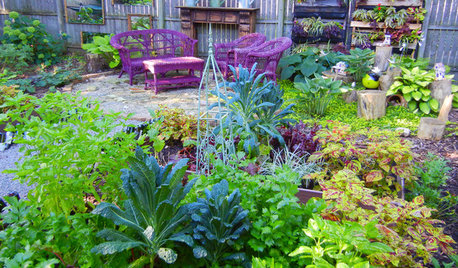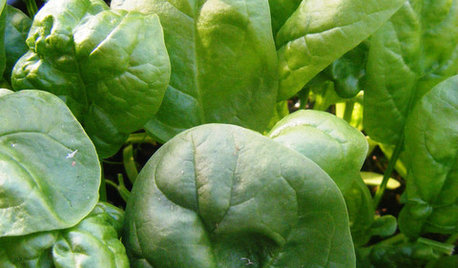no fruit or vegetables
JamesShannon
12 years ago
Related Stories

GARDENING GUIDESGreat Design Plant: Grow Blueberries for Their Fruit and More
Eastern gardeners should consider growing blueberry plants for their delicious fruits, bee-friendly spring blooms and brilliant fall foliage
Full Story
MOST POPULARHow to Get Rid of Those Pesky Summer Fruit Flies
Learn what fruit flies are, how to prevent them and how to get rid of them in your home
Full Story
KITCHEN DESIGNKitchen of the Week: Tiny, Fruitful New York Kitchen
Desserts and preserves emerge from just a sliver of counterspace and a stove in this New York food blogger's creatively used kitchen
Full Story
GARDENING GUIDESVegetables and Flowers Mix in Beautiful Edible Gardens
Ornamentals, meet your edible garden mates. We know you'll get along just beautifully
Full Story
EDIBLE GARDENSGarden BFFs? Why Your Vegetables Are Begging for Companion Plants
Foster friendships among plants for protection from pests, pollination support and color camaraderie
Full Story
EDIBLE GARDENSHow to Grow Your Own Peaches and Nectarines
Make gardening a little sweeter with these juicy fruits, which you can eat after plucking or preserve for later
Full Story
GARDENING GUIDESShades of Vegetable Gardens: Growing Edibles in Less Sun
See how one gardener produces a veritable feast of vegetables and herbs under a canopy of shade
Full Story
EDIBLE GARDENS8 Surefire Vegetables and Herbs for Beginning Gardeners
Learn the edible plants that are popular and easy to grow in a backyard or container garden
Full Story
FARM YOUR YARD9 Ways to Change Up Your Vegetable Garden for the Coming Season
Try something new for edible plantings that are more productive than ever
Full Story
COOL-SEASON CROPSCool-Season Vegetables: How to Grow Spinach
Chock-full of antioxidants and iron, spinach is a nutrient-rich addition to your fall or spring garden
Full Story





terrybull
jimster
Related Professionals
Accokeek Landscape Architects & Landscape Designers · Ilchester Landscape Architects & Landscape Designers · Leawood Landscape Architects & Landscape Designers · Middle River Landscape Architects & Landscape Designers · Woodinville Landscape Architects & Landscape Designers · Anderson Landscape Contractors · Frisco Landscape Contractors · Medford Landscape Contractors · Andover Landscape Contractors · Arden-Arcade Landscape Contractors · Brunswick Landscape Contractors · Madera Landscape Contractors · Northport Landscape Contractors · San Pedro Landscape Contractors · Chicago Ridge Landscape ContractorsMrClint
JamesShannonOriginal Author
brighteyesLC7
makete
JamesShannonOriginal Author
missingtheobvious
nc_crn
chickenfreak
beeman_gardener
Dan _Staley (5b Sunset 2B AHS 7)
rhizo_1 (North AL) zone 7
nygardener
JamesShannonOriginal Author
missingtheobvious